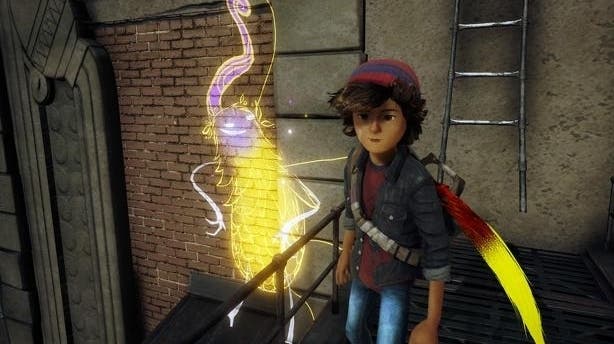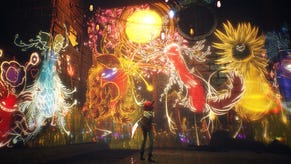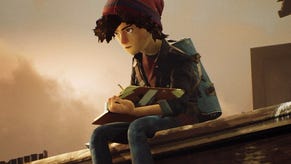Concrete Genie is a game with a ghost in its walls
2D for.
I've been re-reading Yuval Harari's Sapiens on and off over the last few months, and one of the things that has stuck in my head is Harari's suggestion that modern people might retain some degree of vestigial guilt over the disappearance of the rest of the human crowd. Those other humans! We feel their absence in the earth, as Tolkien might have said - and we suspect we are responsible. This might explain why I've been playing Concrete Genie over the last few days and pondering the uneasy relationships that are sometimes hinted at in game design - most notably in Concrete Genie, I'm thinking of the relationship between 2D games and the 3D games that, for a while at least, seemed to have largely replaced them.
First, though: Concrete Genie is a wonder. It is a joy! You play a bullied, artistic child using magical graffiti to bring your collapsing town back to life. As you work through knotty streets and alleys, plucking lost pages of your art notebook out of the air, you're gathering the materials you need to redeem the environment one wall at a time, painting scenes that come to life, and creating luminous doodled genies that can aid you from their positions slapped to the brickwork, neon confections with their pads and prongs, their horns and tails, each one no thicker than spray paint.
It's Informal Urbanism: The Video Game, in other words, and it's also a thing filled with various delights, from the gorgeously wonky roofs and gables of the buildings you leap around on, to the stop-motion aesthetic that has been applied to the game's characters and locations. To use the paint brush here is to engage with a substance that feels genuinely magical - paint pools and tugs and spreads, you can see the water that still lives in it. You're basically using the templates you unlock - trees, stars, moons and suns - to create images, but in combining these templates there is a real sense of both your own creativity and the happy surprises that I've always hoped will be part of the business of making art. What a wonderful thing: to think we got Concrete Genie and the Outer Wilds in the same year is almost too much.
What I love the most, though, are the moments where the 3D world rubs up against the 2D world. As you move the artistic boy around the streets and sewers of the city, his genies can follow him as long as there are connecting walls for them to travel across. Sometimes you will need to interact with them to clear a simple hurdle. These hurdles are emphatically no big deal, but the moments where the two realms meet, where will crosses over, remain an absolute highlight. I'm not how to classify animals that require a three dimensional arrangement of two dimensional surfaces to move across, but this feels like a moment where games embrace the complexity of their past, the wealth of 2D game ideas that bubbled up before and after the first polygons were rendered.

Many games make fun from the interaction of 2D and 3D spaces. Both Mario and Zelda have had a good time with a system very similar to Concrete Genie's over the last few years, while games like Fez - and, before it, Zoe Mode's Crush - encouraged you to think in a strange entanglement of differing dimensions to solve intricate spatial puzzles. Euclid would be very proud. Then there are the games in which a 3D environment briefly resolves itself as the place in which a 2D undertaking is playing out. I'm thinking of Rez here, a game that is simultaneously a channel you move through and a cursor moving forever over a flat screen, but there are vertiginous and reductive moments like this in almost every shooter.
So yes, many games have ghosts in their walls. What I particularly love about Concrete Genie, though, is that it's actually about painting, about the rendering of 3D reality in 2D forms. It's the story of how 2D imagery can transform a world of three dimensions. In other words, it's the story of art itself.







